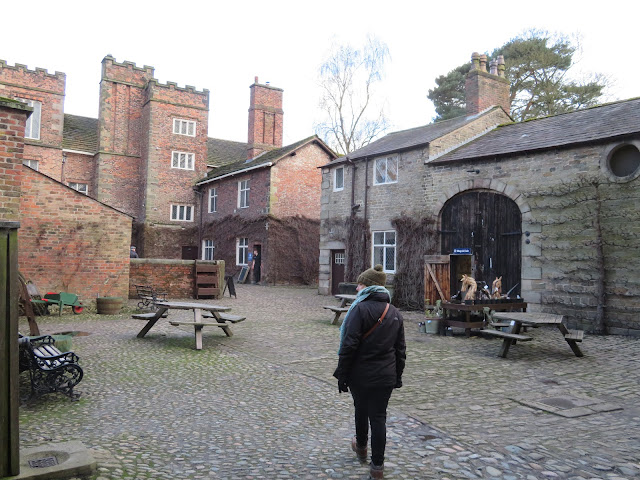Fenders! What is it with folks going about their business with their hanging down all the time? They tell me that it is to protect their paint work when in the locks etc. To me they are just encumbrances that all too easily get ripped off in the locks and then end up round my prop. Several times I have had those round thick rubber ones with the line through the hole in my prop, and jam so badly that they stall the engine. Even worse are those that have tyres hanging over their sides on little bits of string that invariably snap on contact and the tyres just sink to the bottom, lurking, biding their time until I pass and pick them up in the prop. They can be the very devil to get off.
Luckily this one managed just to get hooked right round the prop but was big enough to just prise over the top again. Mind you it isn't an easy job lying on your stomach, head down a hatch trying to lift something with no room.
To me they are used when breasting up to prevent rubbing on your partners boat, or when moored up to prevent bumping alongside the side when boats pass. Even when sharing a wide beam lock with a boat the steel rubbing bands easily cope and are quickly touched up a couple of times a season, and it is what they are for after all.
You can just see our fenders down between 'Holderness' and 'Waka Huia' as we shared the Buckby Locks.
You can see in this photo of four boats outside the Barclaycard Arena in Birmingham that 3 of the 4 seem to have fenders rigged permanently as they are currently no use over the offside. Looking through my photos I suspect that a quarter to a third of boats leave fenders down when moving.
The permanent fenders on bow and stern are useful when you get the turn wrong etc and are more rugged in construction anyway. The bow and stern fenders are seen every day and it is quickly noticed when a chain has broken or they are missing. If the little side fenders are left over the side permanently they just seem to be neglected and get very scruffy quite quickly. As they are below the eye line I contend that they are often overlooked and so not noticed when lost.
Here at the dry dock near Dutton Stop Lock by Preston Brook Tunnel on the Trent and Mersey you can see a fender hanging on a bit of rope that has seen better days.
You can see the rope down to the fender at the stern. We have a bracket midships and one for'd to hang other fenders from.
It looks like at the Ellesmere Port Canal Museum they agree with me on the fender thing.
It is interesting to see that the Isle of Mann catamaran, made of aluminium, does not use fenders either.
We had an incident on the Thames where the lock was pretty full with two narrow boats on one side and a variety of cruisers fitted in every where they could. As the gates were closing another cruiser turned up and who ever was operating the lock opened them again to admit them. The trouble was that it was quite big in beam. This was further compounded by huge inflatable fenders on both sides. She would have fitted in next to me with no trouble without the fenders. As it was the 'driver' was in no mood to wait for the next lock and rammed himself in next to me. The lock was dropped and we were the last two to leave. There was no way he could move as he was firmly jammed in. I had to tell him to tie up aft and then power out of the lock and managed not to drag any of his fenders off after me!
The fenders in use on these cruisers are of a suitable size. Some you see seem to be used for protect super tankers when bunkering from each other!
Anecdotally you hear of boats getting stuck in locks that have narrowed over the years and where fenders just add too much to the beam and get jammed. We have seen some that are indicated as narrow, but surely if you run around with your fenders down you sort of forget they are there and then get surprised when like the men of the Duke of York could go neither up nor down!
This seems a little excessive and smacks of not being able to go astern, or unable to steer!
This photo goes to show that no matter how many fenders you have round your vessel, it is very unlikely that it will them that save the vessel from sinking in the long run.
I understand that everybody has their own ways of doing things, and it is not really a criticism of people, just an observation!


















































